The art of Trenton Doyle Hancock: a mixture of mythology, pop culture, religion, psychology
What happens when we mix mythology, pop culture, religion, and psychology into a single artistic vision? What does his art tell us about us, our struggles, our inner transformations? If we stop to think, that is precisely the starting point of the work of Trenton Doyle Hancock, an artist whose bold, visionary style invites us to explore our humanity in ways that defy convention. Born in 1974 in Oklahoma City, Hancock has quickly distinguished himself in the contemporary art scene for his ability to construct complex and fascinating universes.
But what does it really mean to “create a universe” through art? In his case, it means inventing a personal mythology that constantly evolves, like a tale that never has a definitive end, but branches out, grows, transforms. His creatures, the Mounds, are symbolic entities that act as protagonists in an ever-changing story. They are monsters, angels, symbols of struggle, redemption and rebirth. But they are also a reflection on the continuous evolution of the human being: for the artist, in fact, "Mounds are not only natural depositories for memories and other bits of discarded humanity, but they are a way for us to build a collective psycho-emotional hierarchy, as well as a way to describe an individual’s intuitive profile.“ (” Mounds are not only natural depositories for memories and other bits of discarded humanity, but they are also a way for us to build a collective psycho-emotional hierarchy, as well as a way to describe an individual’s intuitive profile.")
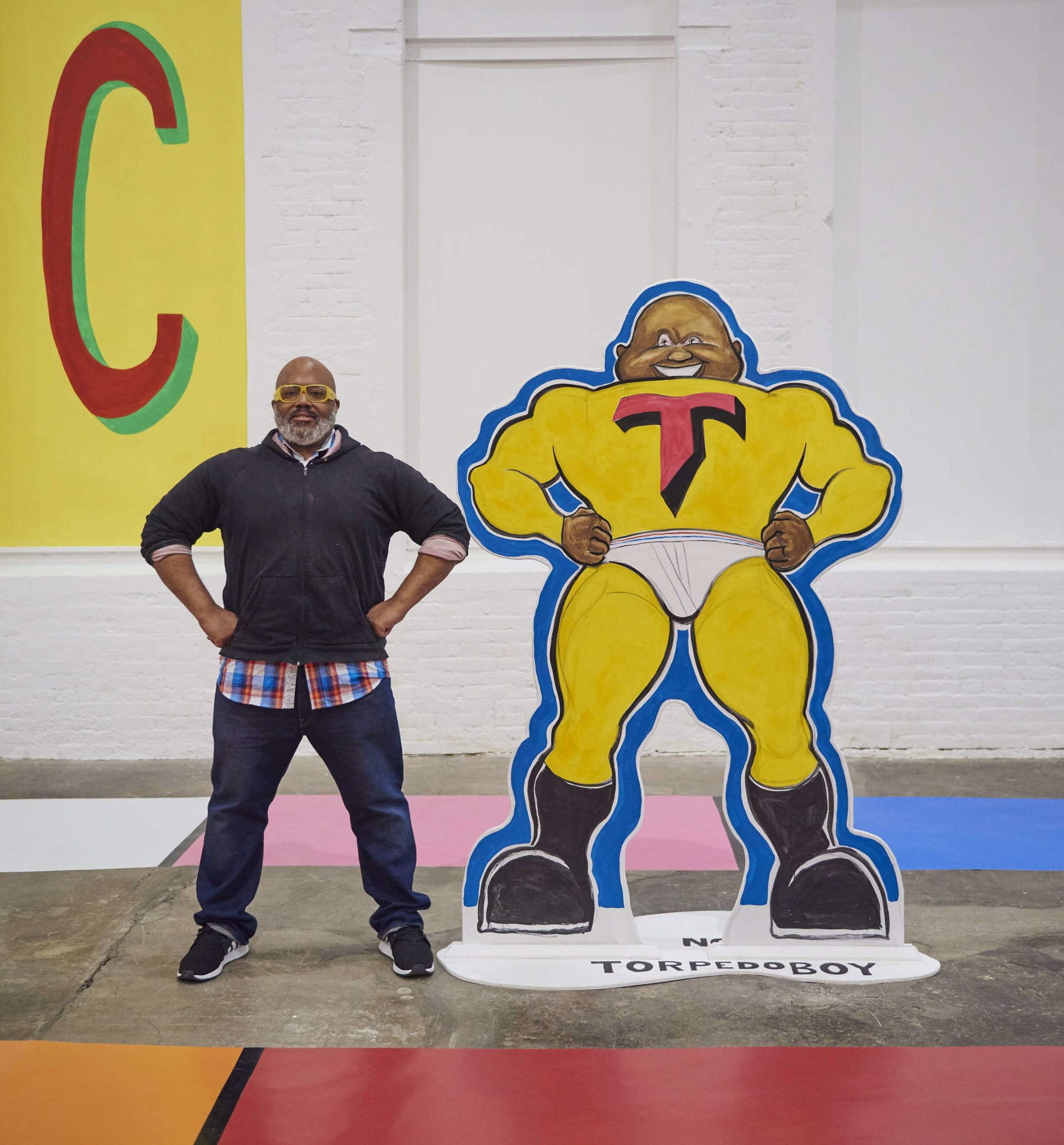
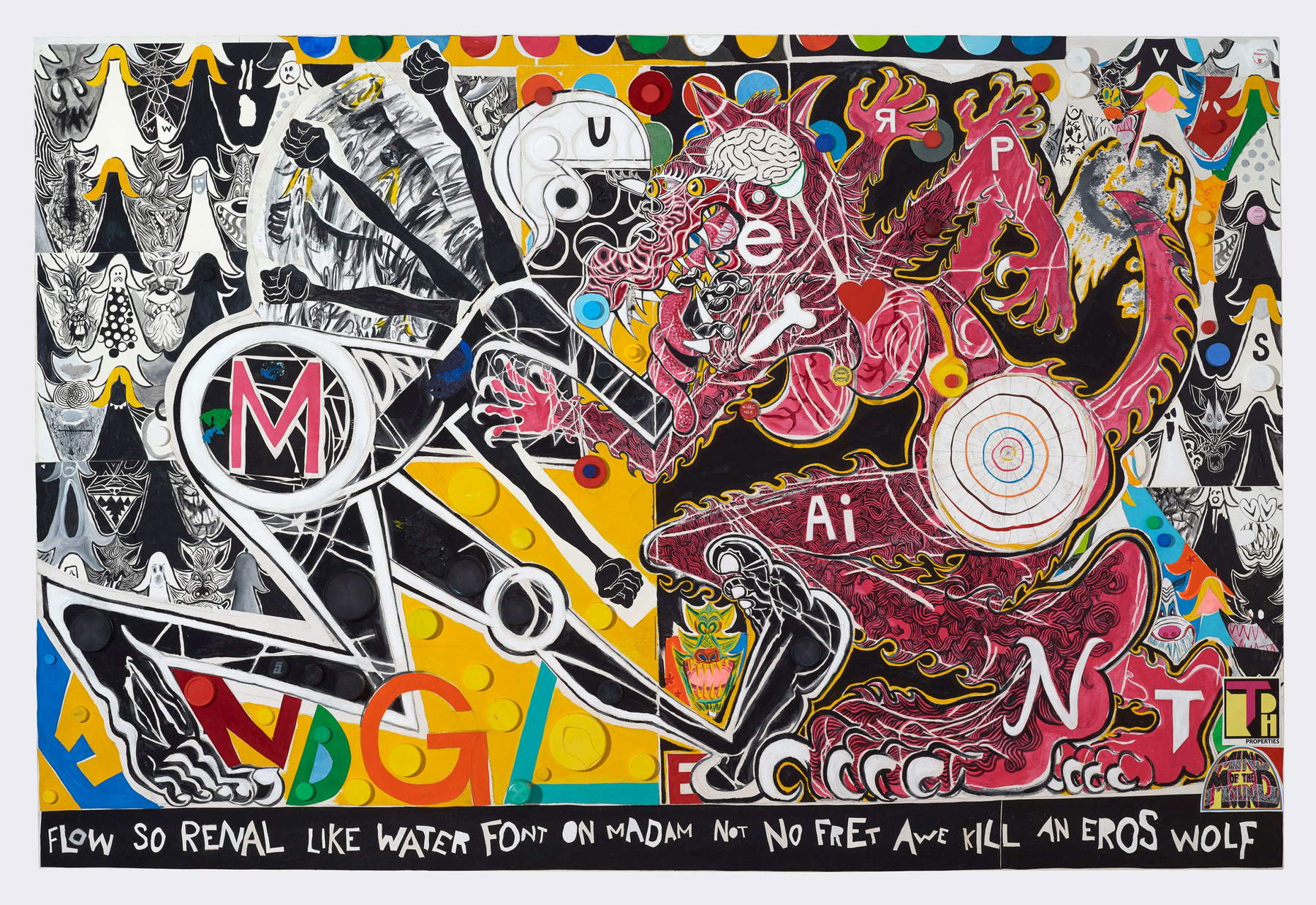
Hancock not only presents us with paintings and sculptures: he offers us a world in which the laws of physics and reality are fluid, in which the rules of our everyday world give way to a parallel universe, where the line between good and evil is blurred.
The cycle devoted to Mounds embodies this idea. His canvases seem to paint a fertile but disturbing landscape in which organic forms twist, entwine, live and dissolve. In a work like The She Wolf Amongst Them Fed Undom’s Conundrum (2016), the artist stages a primal conflict between the Mounds. There is a sense of struggle, but also of cyclicity, as if each battle is destined to repeat itself, to resurrect, to change form. And here we ask: is it really a struggle between good and evil, or is it rather a reflection on our inner contradictions?
If the Mounds are entities that embody universal conflicts, then color becomes the language that tells their story. Hancock does not use color to decorate: he uses it to communicate emotions, to evoke states of mind, to explore the unconscious.
In works like Choir (2003), the vibrant color palette is never random. Each hue is a gesture that emphasizes the intensity of a psychological conflict or the tension between desire and suffering. The contrast between the softness of the forms and thevisceral intensity of the colors makes us reflect on our existence, our fragility and our need to be recognized. It is as if each brushstroke is a confession, a cry, a prayer. But it is not only a visual art: it is an art that becomes a sensory experience. How many times have you been lost in front of a painting, feeling almost a physical connection with what you see? In Hancock, color is physical, it is body, it is pulsating life.
Yet, as is often the case with artists who can “think beyond,” Hancock does not stop at painting. What if art could be more than an object to be observed? What if, instead, it became a living experience, engaging all our senses? Performance becomes another tool to make his mythology “come alive.” The artist creates three-dimensional worlds where time and space intertwine.
In March 2019, Hancock brought his solo project Mind of the Mound to MASS MoCA, Massachusetts, staging his mythological narrative and fully integrating storytelling, installation, and performance. The audience was no longer a passive observer, but became part of the story within an immersive, almost carnivalesque environment that was almost on the border between a museum and a playground.
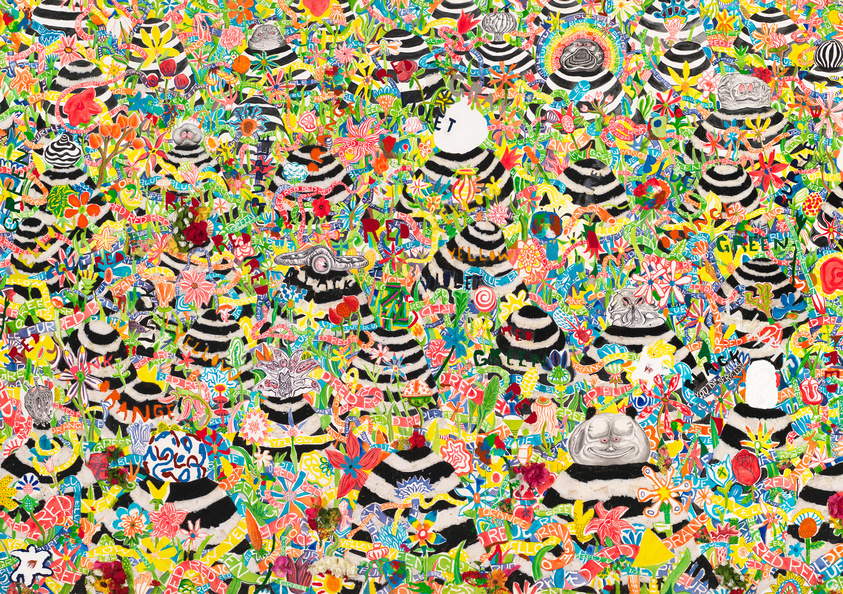
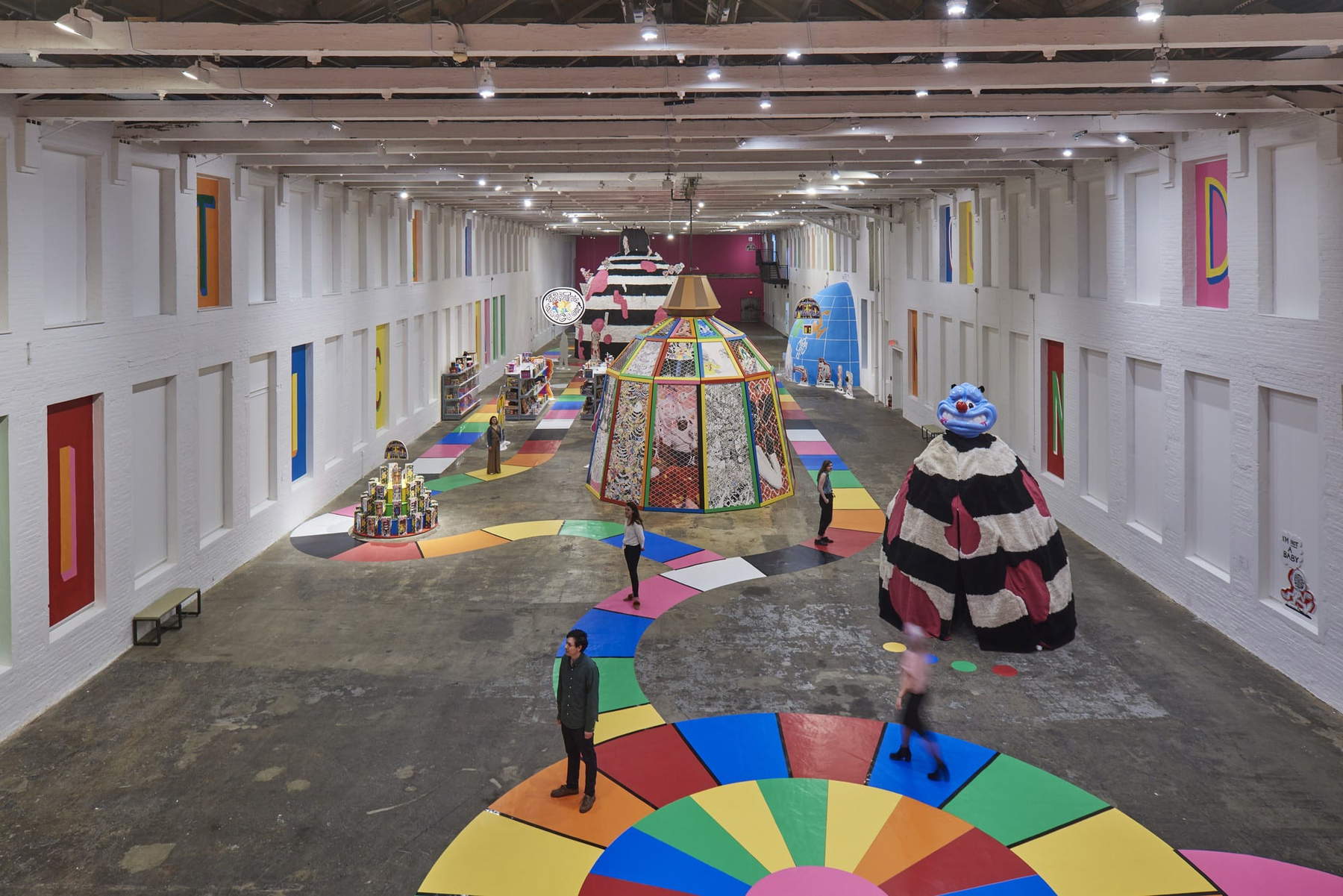
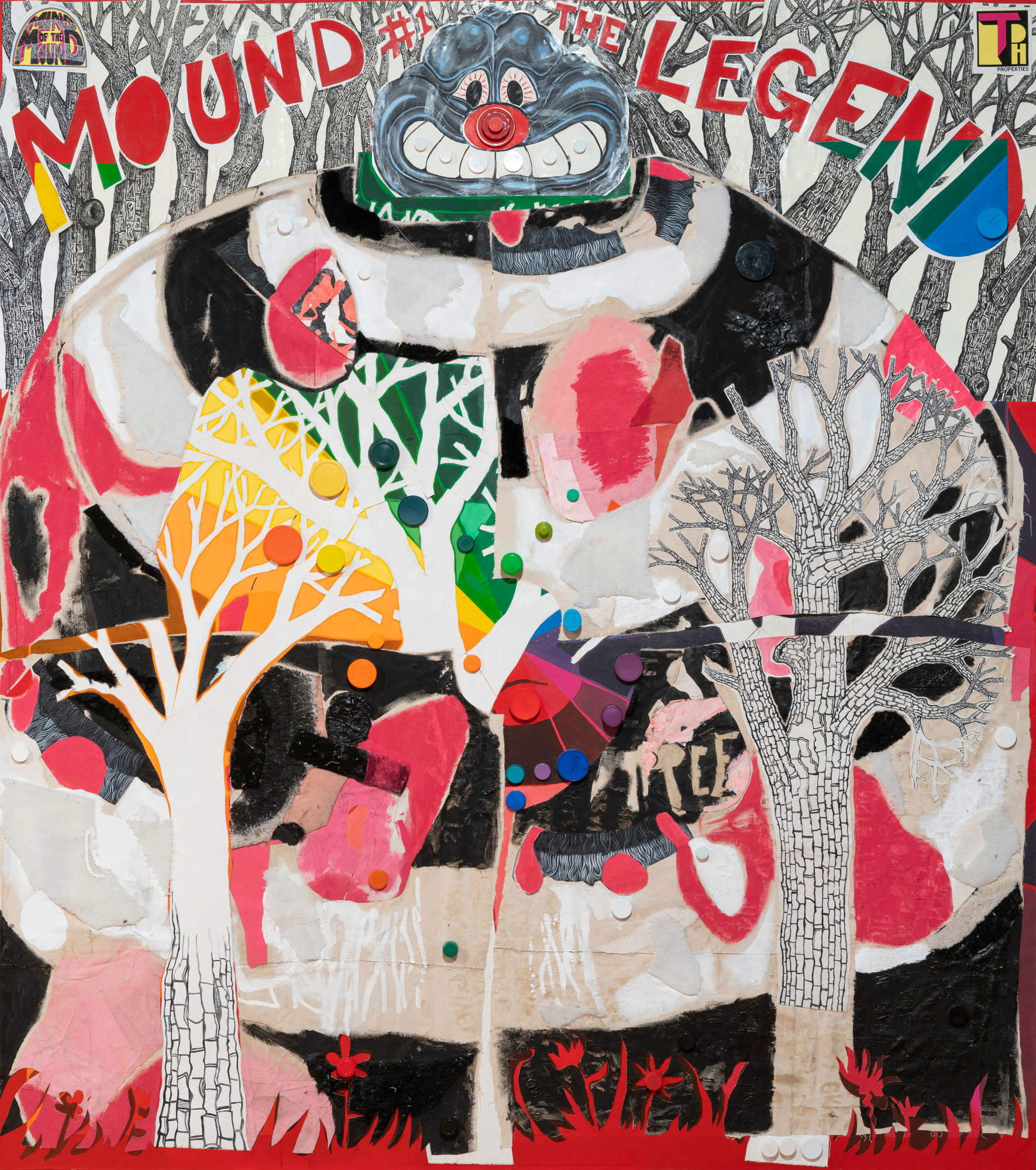
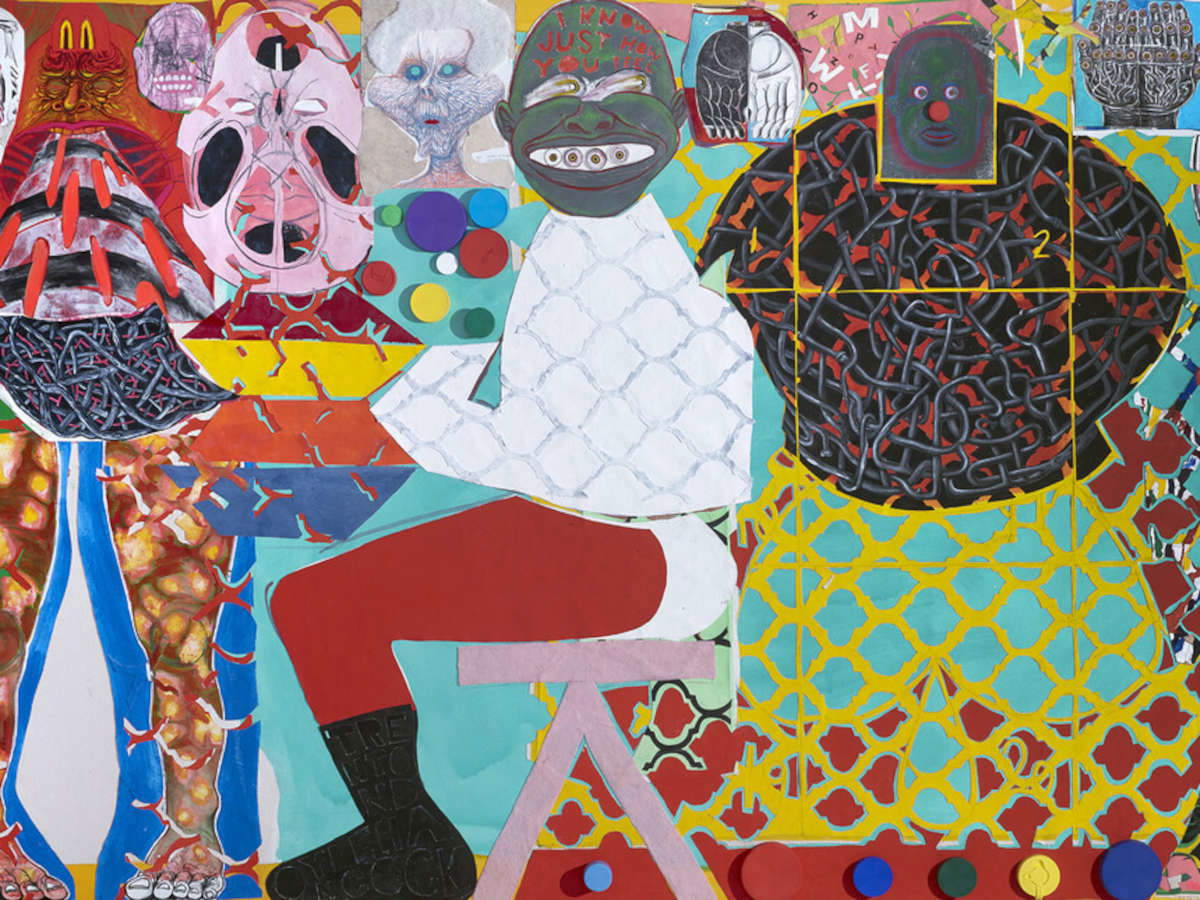
Hancock has always claimed to have been influenced by comic books, cartoons, and music. But not as a mere fan of these worlds. He reinvented them. He made them vehicles for exploring universal issues, the same ones that affect us every day.
In the end, the question we are left with is: what does Trenton Doyle Hancock’s art really tell us? It is not just a question of aesthetics, painting or sculpture. It is a question of how we see the world, how we perceive our inner struggles and spiritual challenges.
Hancock challenges us to look beyond appearance, to penetrate into the heart of his worlds, to discover his creatures, to be part of his story. And perhaps, in the end, that story is ours as well. His art offers us no easy answers, but forces us to reflect on who we are, what we want to become, how we can transform ourselves. An endless journey in search of truth and meaning.
Warning: the translation into English of the original Italian article was created using automatic tools. We undertake to review all articles, but we do not guarantee the total absence of inaccuracies in the translation due to the program. You can find the original by clicking on the ITA button. If you find any mistake,please contact us.





























